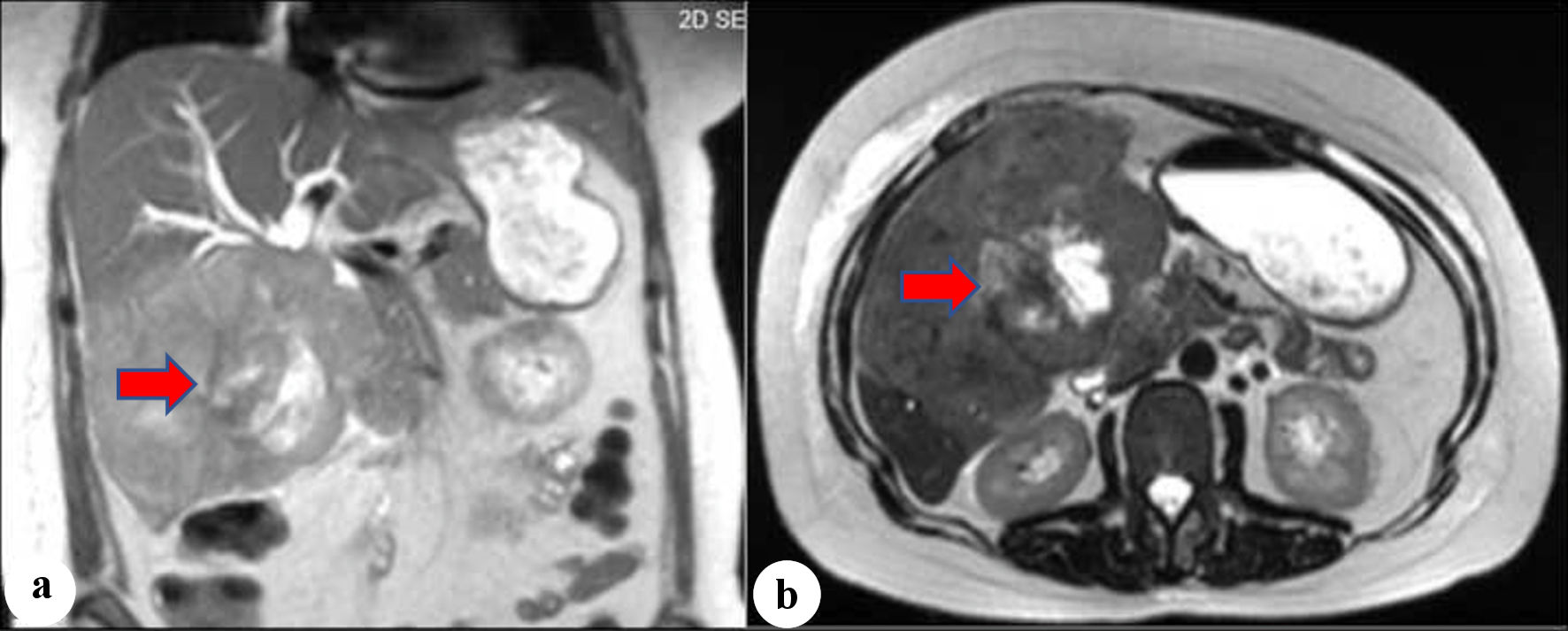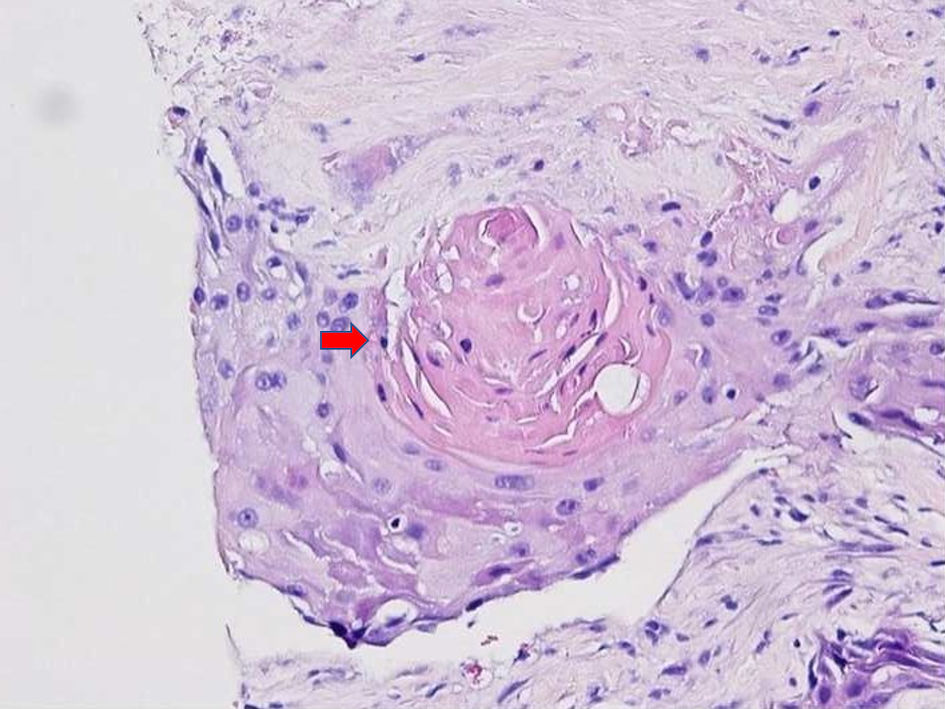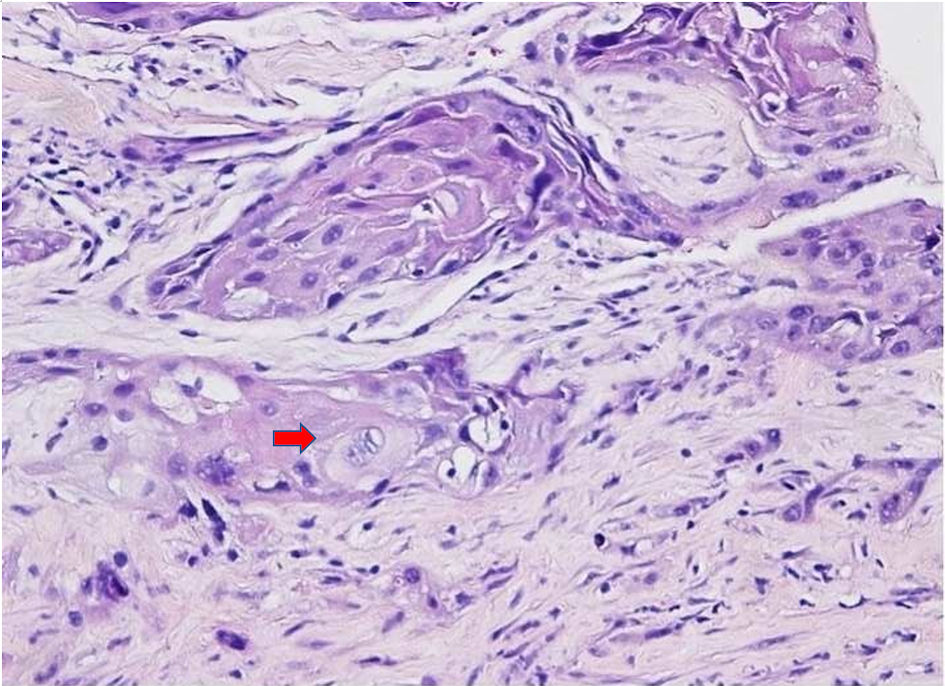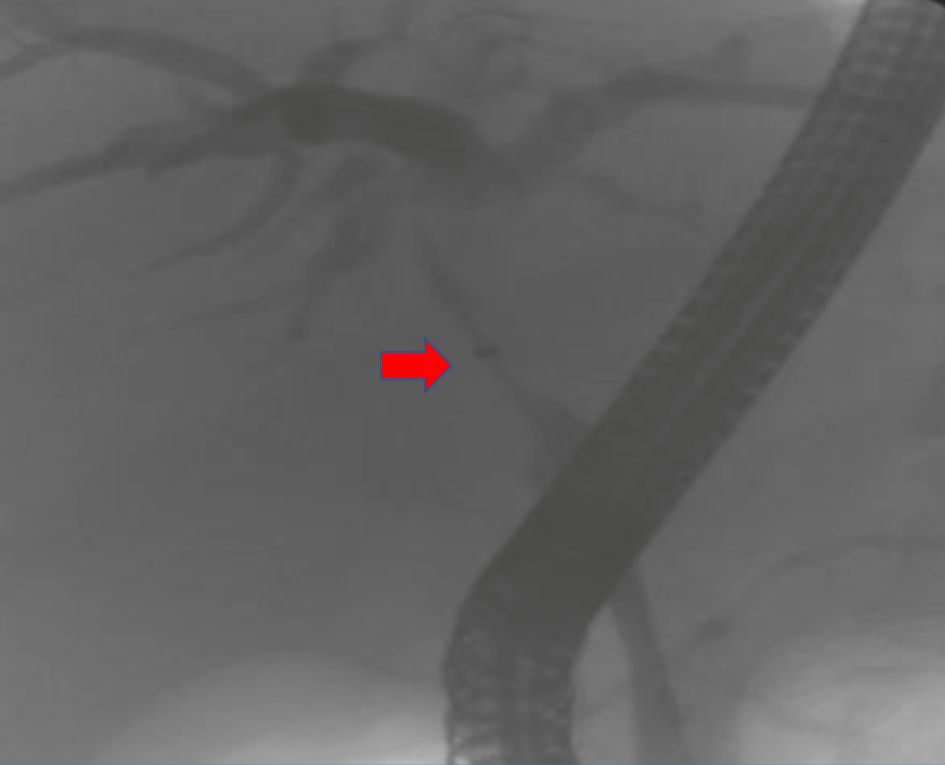
Figure 1. (a, b) Magnetic resonance imaging (MRI). The arrows show heterogeneous mass with a large necrotic center involving the right and left hepatic lobes, common hepatic duct, and proximal common bile duct.
| Gastroenterology Research, ISSN 1918-2805 print, 1918-2813 online, Open Access |
| Article copyright, the authors; Journal compilation copyright, Gastroenterol Res and Elmer Press Inc |
| Journal website https://www.gastrores.org |
Case Report
Volume 16, Number 5, October 2023, pages 276-279
Primary Squamous Cell Biliary Carcinoma With Liver Metastasis Is Rare but Malicious
Figures



